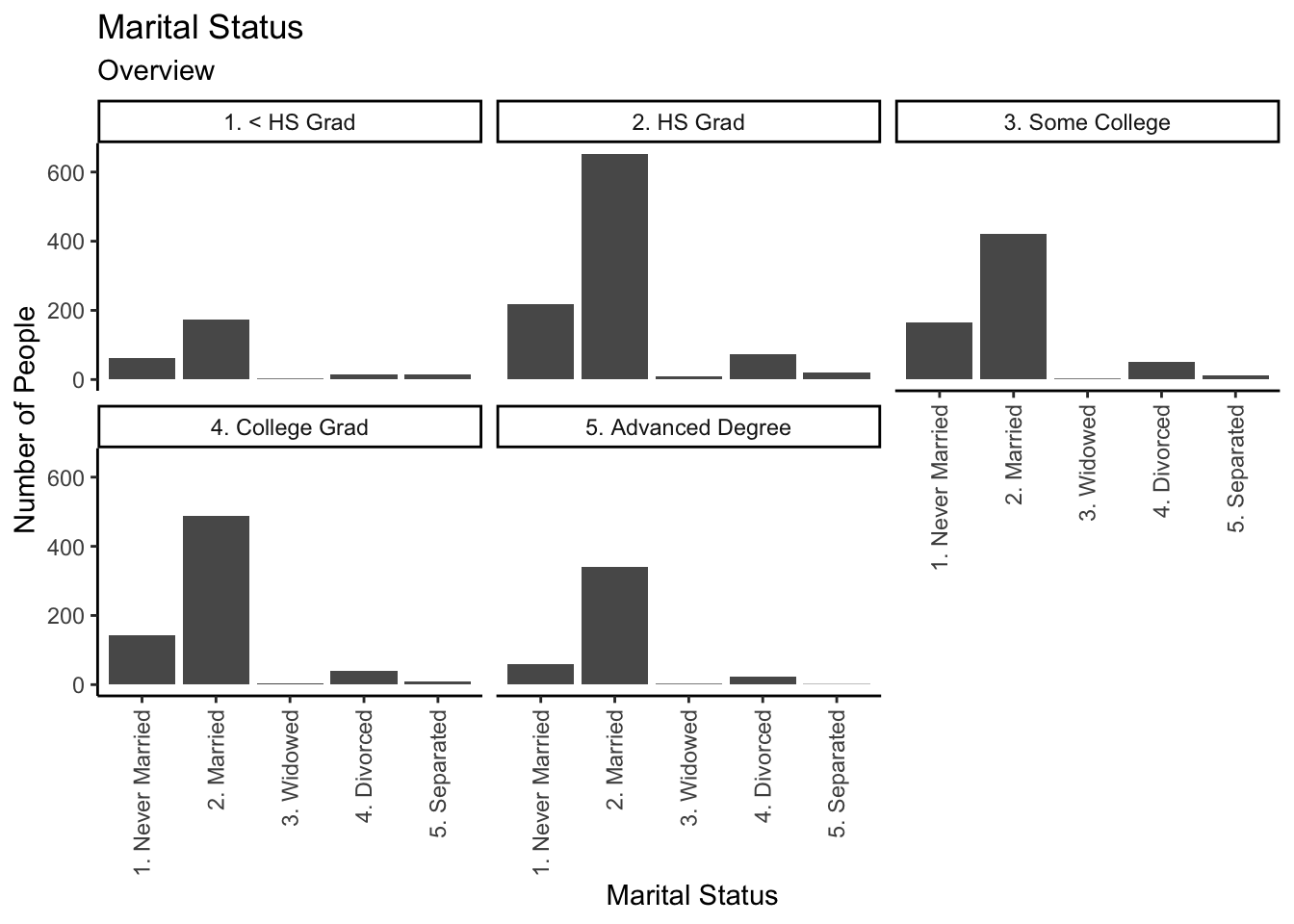Chapter 3 Barplot
You should use this method if the data is:
- Categorical
In this chapter you will learn how to do some simple data explorations for categorical variables using barplots.
3.1 One variable
wage_df %>%
ggplot(aes(x = maritl)) +
geom_bar()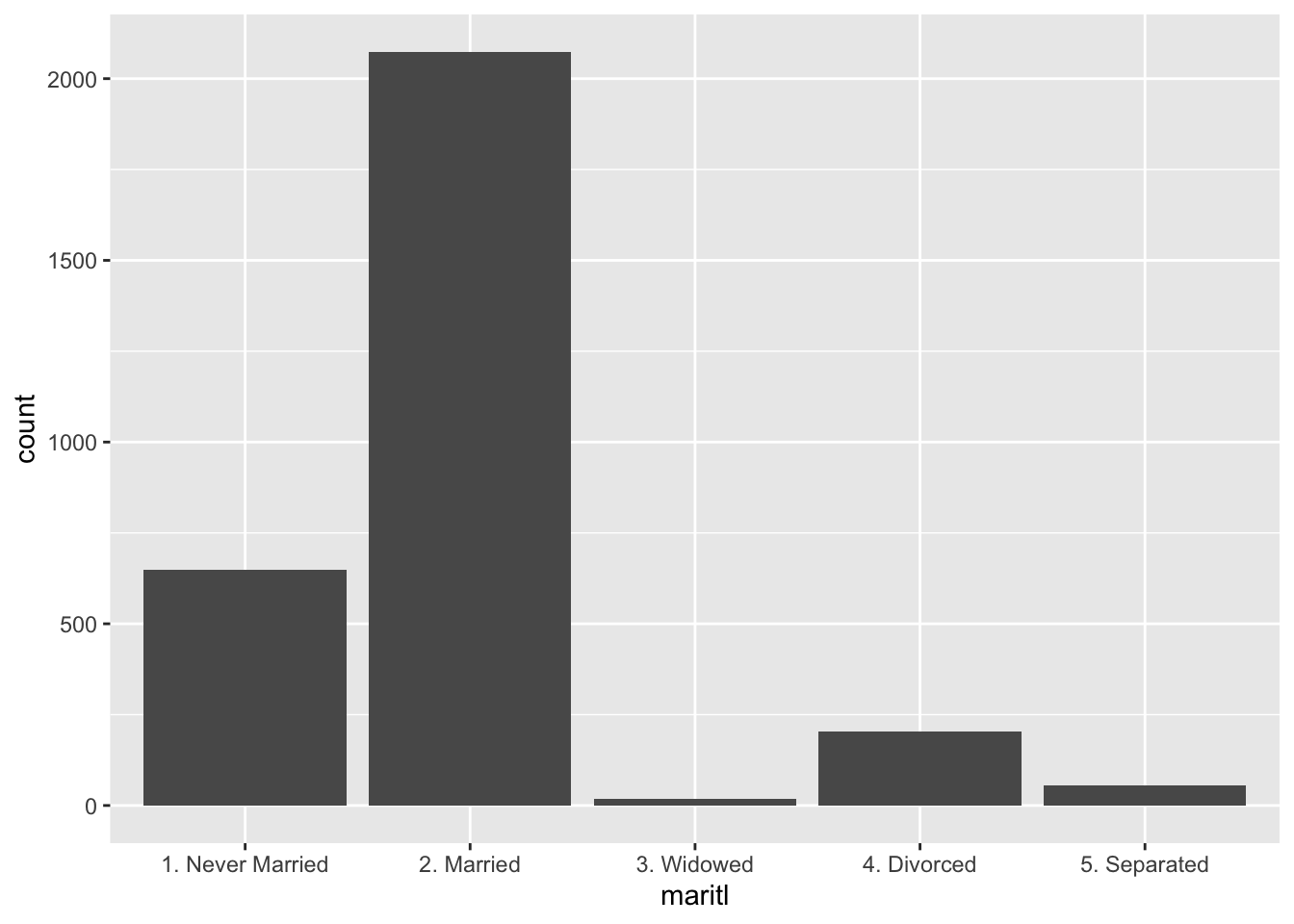
3.2 Two variables
3.2.1 Stacked barplot
Absolute values:
wage_df %>%
ggplot(aes(x = maritl, fill = education)) +
geom_bar()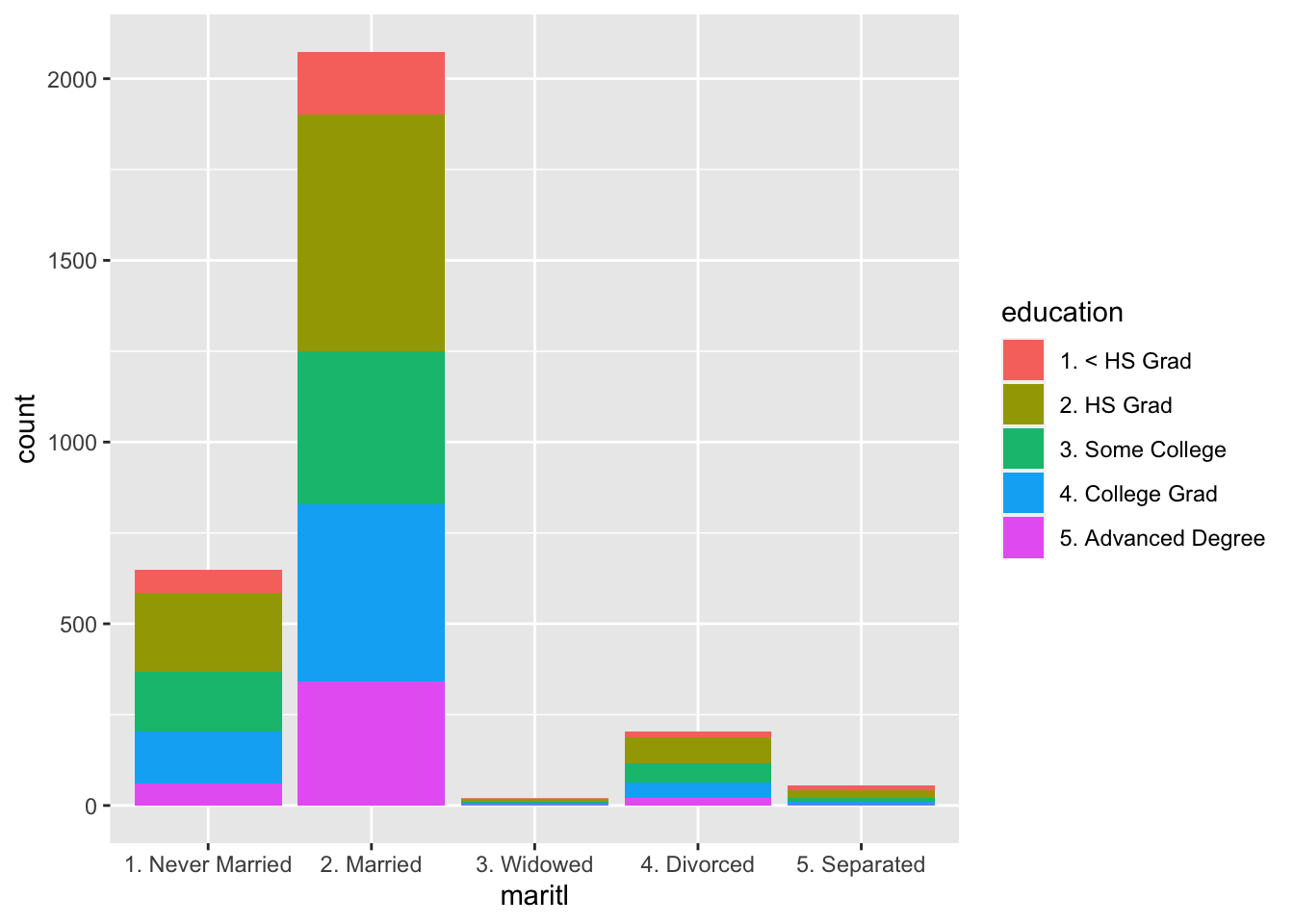
Relative values:
wage_df %>%
ggplot(aes(x = maritl, fill = education)) +
geom_bar(position = "fill") +
ggtitle("Marital Status", "Overview") +
xlab(" Marital Status") +
ylab("Number of People") +
theme_classic() +
scale_fill_brewer(palette = "Blues") +
theme(legend.title = element_blank())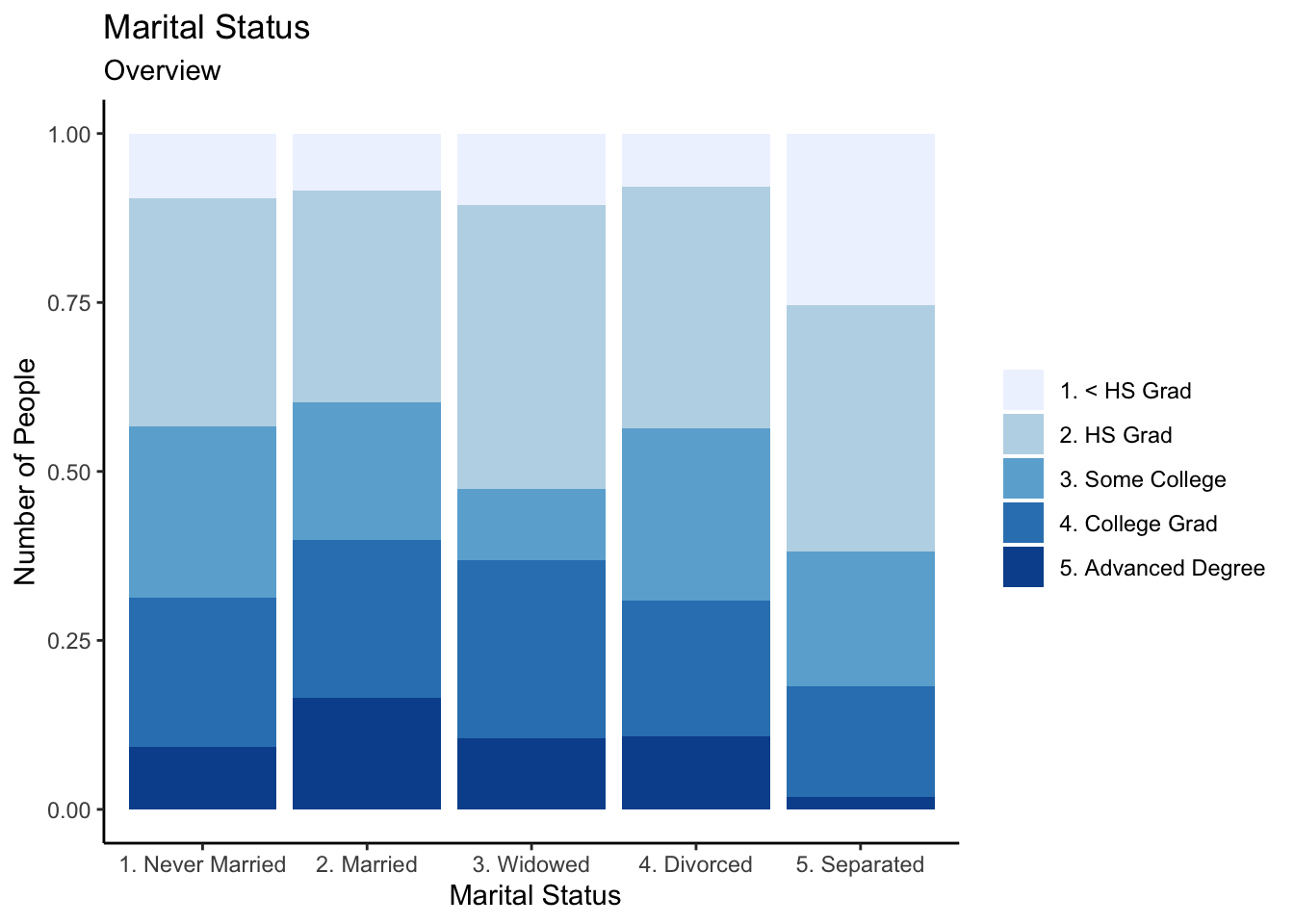
3.2.2 Side-by-side barplot
Basic plot:
wage_df %>%
ggplot(aes(x = maritl, fill = education)) +
geom_bar(position = "dodge") 
Plot with some adjustments:
wage_df %>%
ggplot(aes(x = maritl, fill = education)) +
geom_bar(position = "dodge") +
ggtitle("Marital Status", "Overview") +
xlab(" Marital Status") +
ylab("Number of People") +
theme_classic() +
scale_fill_brewer(palette = "Blues") +
theme(legend.title = element_blank())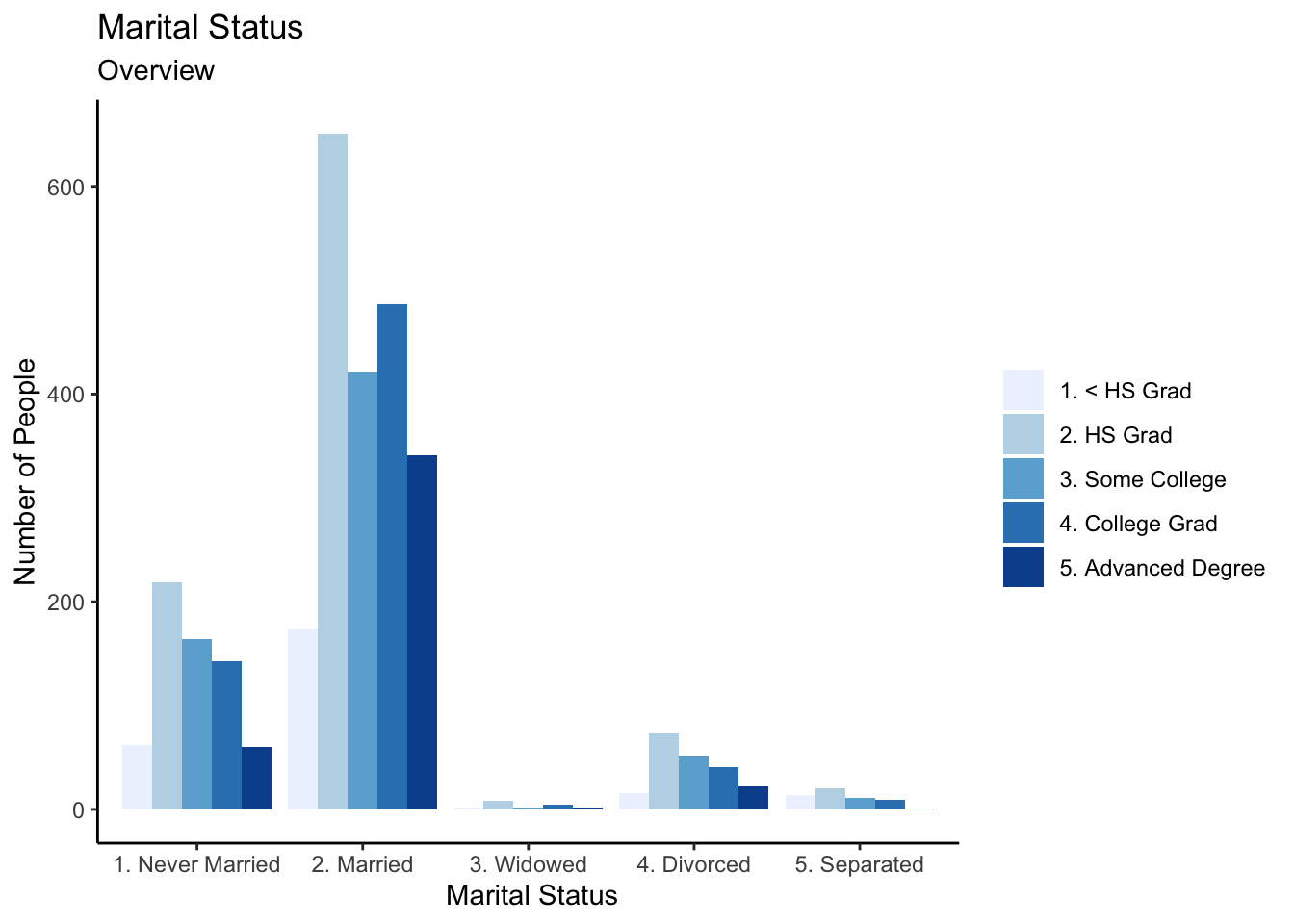
3.2.3 Faceted barplot
Basic plot:
wage_df %>%
ggplot(aes(x = maritl)) +
geom_bar(position = "dodge") +
facet_wrap(~ education)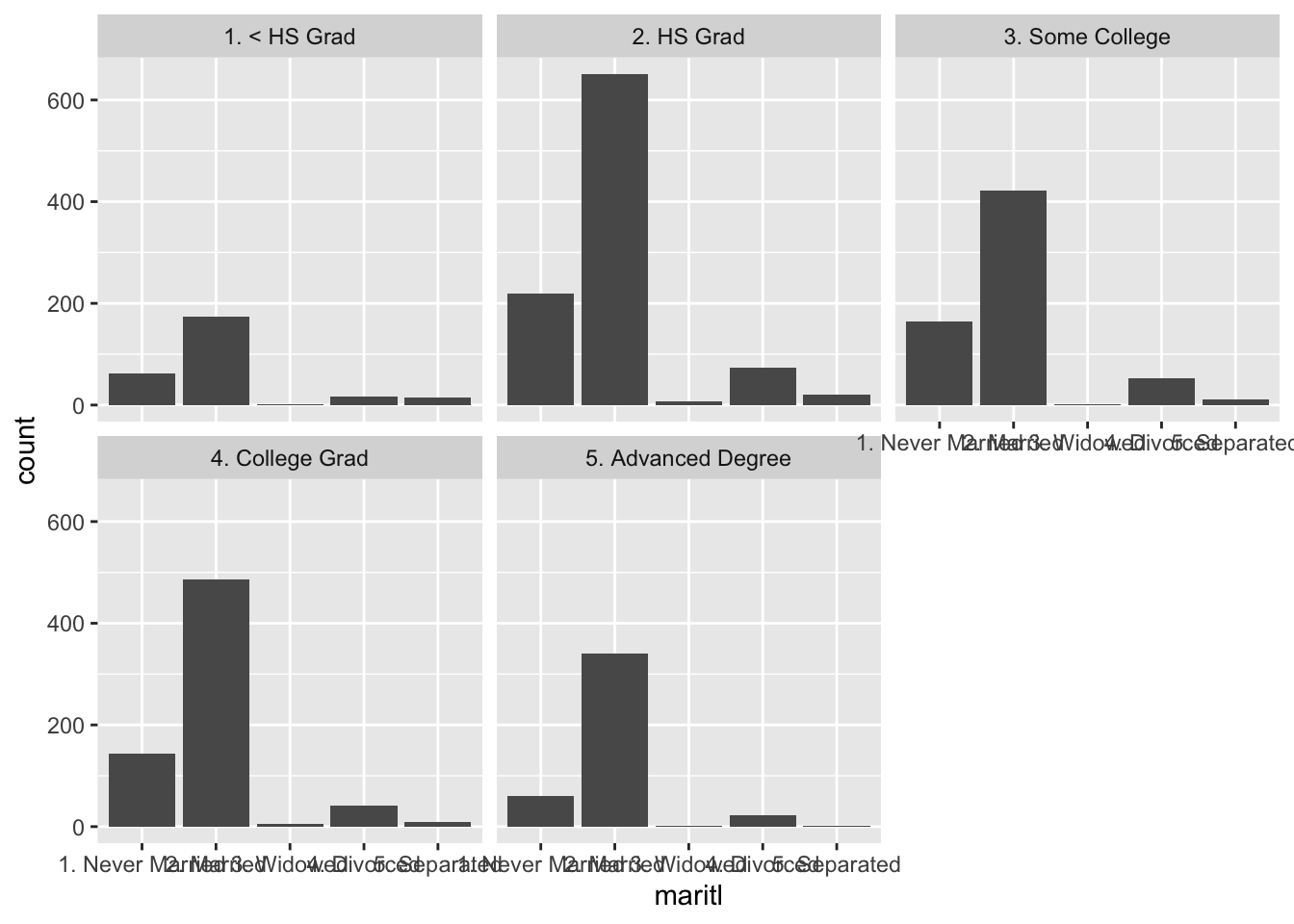
Plot with some adjustments to change our x labels using justifications):
Horizontal and vertical justification have the same parameterisation, either a string (“top,” “middle,” “bottom,” “left,” “center,” “right”) or a number between 0 and 1:"
- top = 1, middle = 0.5, bottom = 0
- left = 0, center = 0.5, right = 1
wage_df %>%
ggplot(aes(x = maritl)) +
geom_bar(position = "dodge") +
facet_wrap(~ education) +
ggtitle("Marital Status", "Overview") +
xlab(" Marital Status") +
ylab("Number of People") +
theme_classic() +
theme(legend.title = element_blank()) +
theme(axis.text.x = element_text(angle = 90,
vjust = 0.5,
hjust= 1))